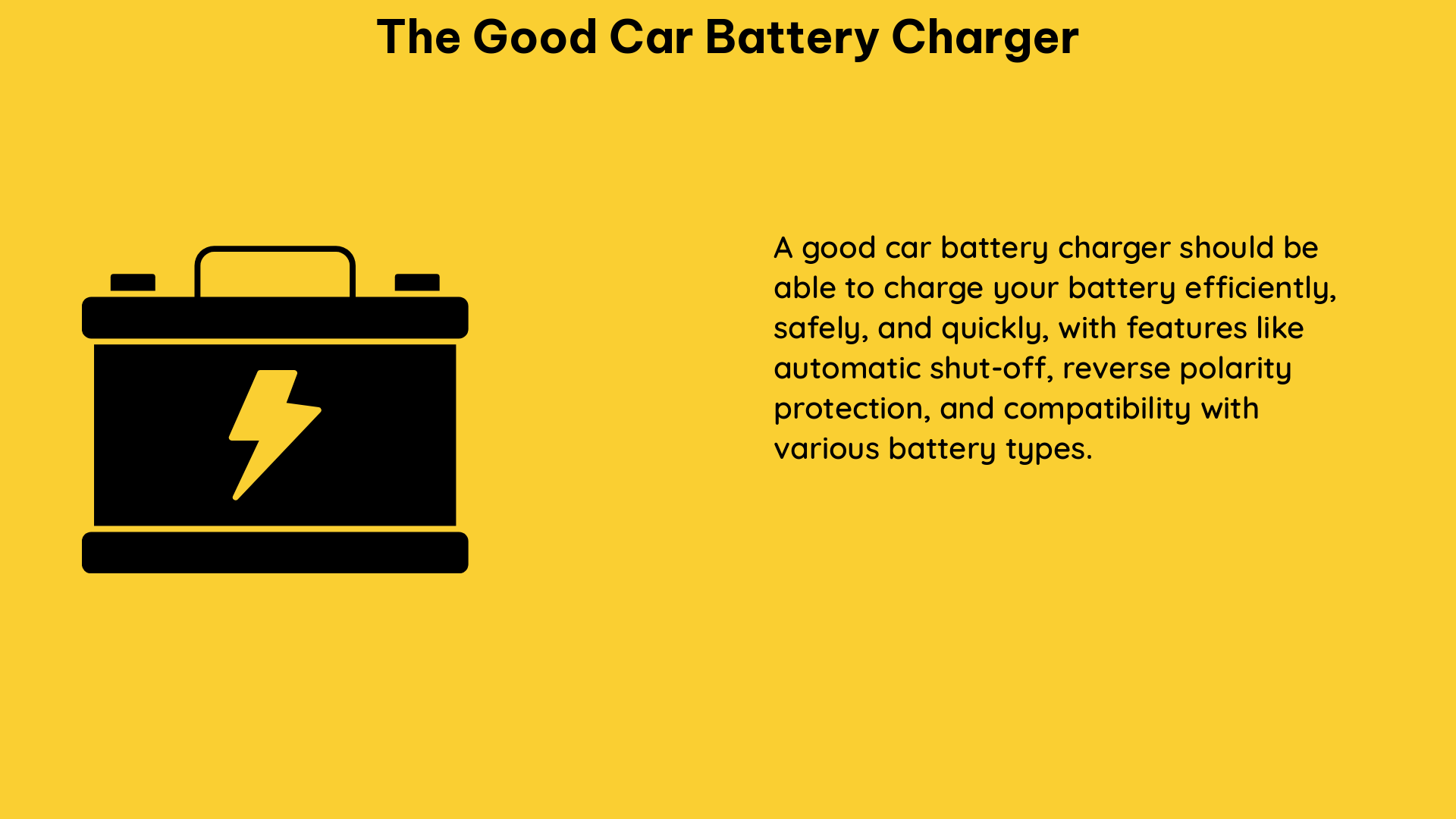A good car battery charger is an essential tool for maintaining and charging car batteries. When selecting a car battery charger, there are several key factors to consider, including charging speed, versatility, ease of use, and value.
Charging Speed: Optimizing Battery Rejuvenation
The charging speed of a car battery charger is determined by its voltage and amperage output. A higher voltage will charge a battery more quickly, but too many volts can damage the battery. Ideally, a good car battery charger should produce at least 12.0 V to effectively charge a 12.0-V battery. Maintaining a consistent voltage output is also crucial for charging speed and battery protection.
- Voltage Output: A good car battery charger should have a voltage output of at least 12.0 V to charge a 12.0-V battery effectively.
- Amperage Output: The amperage output of a car battery charger determines the charging speed. Higher amperage (e.g., 10-20 A) will charge the battery faster, but lower amperage (e.g., 2-5 A) is better for maintaining and trickle charging.
- Voltage Consistency: Maintaining a consistent voltage output is essential for protecting the battery during charging. Fluctuations in voltage can damage the battery.
Versatility: Compatibility with Various Battery Types

Not all car battery chargers are compatible with every type of battery. While most cars use a wet cell battery, some may use an absorbed glass mat (AGM), gel, or lithium-ion battery. A good car battery charger should be versatile enough to work with multiple battery types.
| Battery Type | Compatibility |
|---|---|
| Wet Cell | ✓ |
| AGM | ✓ |
| Gel | ✓ |
| Lithium-Ion | ✓ |
Additionally, some car battery chargers have advanced features, such as overcharge protection and trickle charging options, which contribute to their versatility and battery protection capabilities.
Ease of Use: Streamlining the Charging Process
An easy-to-use car battery charger should have several user-friendly features, such as:
- Long Clamp Cables: Longer clamp cables (e.g., 6-8 feet) make it easier to connect the charger to the battery, especially in tight engine compartments.
- Durable Alligator Clamps: Strong, corrosion-resistant alligator clamps ensure a secure connection to the battery terminals.
- Long Outlet Cords: Longer outlet cords (e.g., 6-8 feet) provide more flexibility in positioning the charger.
- Straightforward Interface: Simple, intuitive controls and clear instructions make the charging process hassle-free.
- Automatic Charging: Some chargers can start charging with just a few button presses, further simplifying the process.
Value: Balancing Cost and Performance
The value of a car battery charger is determined by the relationship between its performance in the previous categories and its price. A good car battery charger should offer a balance of fast charging speed, versatility, and ease of use at a reasonable cost.
- Charging Speed vs. Price: A charger that can quickly charge a battery without compromising safety or battery life is a good value.
- Versatility vs. Price: A charger that can work with multiple battery types without significant price premium is a good value.
- Ease of Use vs. Price: A charger that is user-friendly and requires minimal setup is a good value.
By considering these factors, you can find a car battery charger that provides excellent performance and value for your needs.
Technical Specifications and DIY Considerations
When it comes to technical specifications, a good car battery charger should have the following:
- Voltage Output: At least 12.0 V to charge a 12.0-V battery effectively.
- Voltage Consistency: Maintain a consistent voltage output to protect the battery during charging.
- Battery Compatibility: Work with multiple battery types, including wet cell, AGM, gel, and lithium-ion.
- Advanced Features: Overcharge protection and trickle charging options to prevent battery damage.
From a DIY perspective, it’s crucial to properly connect the battery charger to the battery, ensuring that the positive and negative cables are connected to the correct terminals. Monitoring the charger while it’s in use is also important to ensure it’s working correctly and to prevent overcharging.
By considering these factors and technical specifications, you can find a good car battery charger that will effectively maintain and charge your vehicle’s battery, providing reliable performance and long-term battery health.
References:
– What Should the Output of a Trickle Charger Be?
– Battery Charger Testing Results
– How to Pick the Right Car Battery Charger

The lambdageeks.com Core SME Team is a group of experienced subject matter experts from diverse scientific and technical fields including Physics, Chemistry, Technology,Electronics & Electrical Engineering, Automotive, Mechanical Engineering. Our team collaborates to create high-quality, well-researched articles on a wide range of science and technology topics for the lambdageeks.com website.
All Our Senior SME are having more than 7 Years of experience in the respective fields . They are either Working Industry Professionals or assocaited With different Universities. Refer Our Authors Page to get to know About our Core SMEs.